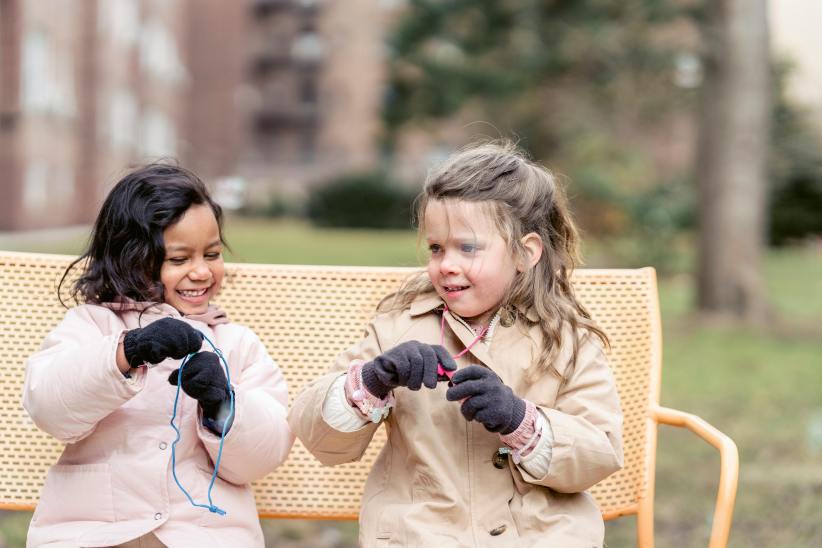Parents have instincts that shouldn’t be ignored. Often they know in their heart of hearts that something is physically “not right” with the way that their child moves and interacts with the world. Perhaps they’ve had their child evaluated by a variety of pediatric specialists, but haven’t come any closer to solving the dilemma. And even worse, they really just want to help their child but have no idea where to turn.
Quite often these children have been evaluated for physical therapy services through Early Intervention or their local school districts and have not qualified. They don’t seem to show enough of a gross motor delay to receive physical therapy services through these avenues. These children fall into a black hole and their parents are faced with a “dilemma.” The following questions run through their minds. Where do I go from here? Should I be complacent with my child’s physical abilities? Will they grow out of it?
Overall Muscle Tone
First and foremost there must be an understanding of what hypotonia is. Hypotonia is low overall muscle tone throughout the body. It can also be described as a limpness or feeling of heaviness when an arm or leg is moved against gravity and can be felt in a young child when they are lifted into your arms. Once lifted your hands seem to sink into the child’s body with little resistance felt. It can be difficult to find a comfortable safe place to balance your child when holding them.
Ligament laxity can often occur with hypotonia. Ligaments protect the joints and add stability to them. This laxity can create excessive movement in the joints, which impacts balance, control and strength during gross motor activities. Children with hypotonia tend to choose positions for play that are very stable. These can include w-sit or ring sitting. A w-sit means the child sits on their bottom with both legs bent at the knee while the rest of the leg (shin and foot) is splayed out to either side of their body. W-sitting can further stretch the ligaments of the hips and knees and can impact the integrity of these joints as the child grows and develops. In ring sitting the child sits on his bottom with his legs in front of him in an oval shape so that the bottoms of his feet can touch. Ring sitting can feed into shortening of the hamstrings that impact posture and skeletal alignment.
Early Clues
Sometimes hypotonia is diagnosed at grade school age, however, it is present from birth. These are typically the babies who despised tummy-time and scooted rather than crawled. Tummy-time is so important for babies. It is the time that a balance is created between the trunk flexors and extensors. Trunk extensors become stronger via play in pivot-prone and the development of shoulder strength is achieved through upper extremity weight bearing. The strength created in the shoulders/trunk during tummy-time prepares the baby for crawling. Babies with hypotonia find it so difficult to hold their bodies up against gravity that they resist tummy-time and thus the important building blocks necessary to develop graded control. Quite often these babies are very creative and find other ways to move. Unfortunately. they skip valuable steps that can impact them later down the road.
Once the child is grade school age it really doesn’t matter whether they crawled or scooted. Now they need to be able to use their bodies efficiently. Children with hypotonia tend to tire quickly because they don’t know how to use their bodies strategically. For example, if you ask a child with hypotonia to jump, they can but they only activate their legs. If you ask another child to jump who doesn’t have hypotonia they can incorporate their arms, legs and trunk all together. This can enable them to jump further, stronger and with fluidity.
The Good News
The good news is these children can gain strength and they can still develop balance in their bodies. It’s not too late. A physical therapy program can be very effective with a focus on strengthening the specific muscle groups, which are weak. Improving core muscle symmetry while supporting any distal (foot/ankle) weaknesses.
With therapy, children diagnosed with hypotonia can show great improvement. These children can learn to adopt strategies necessary to become more successful in sports (as well as movement in daily life) and as a result evolve into stronger more confident children.
So maybe they won’t play shortstop for the Yankees or dance for the New York Ballet, but they can be helped to keep up with their friends during phys ed, a soccer or Little League game. They can join in during recess for a game of tag and feel confident that they won’t be pushed over. As parents, isn’t that all we truly want?
Lisa A. Fishberger, RPT is a pediatric physical therapist.
www.pediatricpt.net













